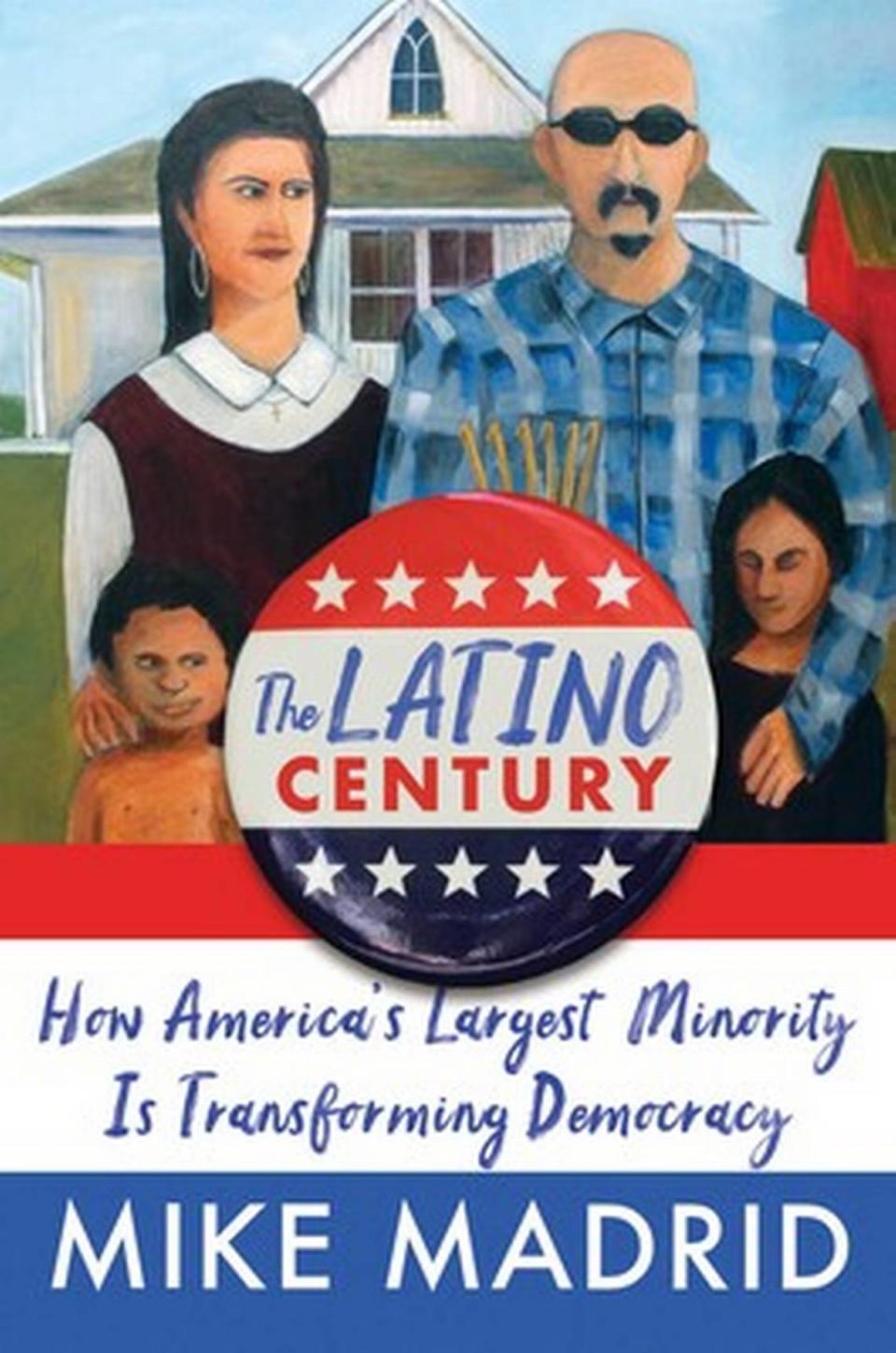New book shows how Latino voters are dismantling America’s Black-white racial order | Opinion
Editor’s note: This story is excerpted from “The Latino Century: How America’s Largest Minority is Transforming Democracy.” Written by Sacramento-based political strategist Mike Madrid, The Latino Century is being published on June 18 by Simon & Schuster. Marcos Breton, California Opinion Editor for McClatchy, helped write and edit the book.
The United States is in a demographic footrace between an emerging generation—younger, browner, poorer, but more optimistic about the promise of America, despite having few reasons to believe in it—and an older generation, the wealthiest, most privileged generation of Americans who have ever lived, whose lives have been shaped by relative peace and U.S. global hegemony. Yet they have the most negative view of this country and America’s future than any generation in modern polling history.
Here the math is probably going to be our saving grace. There are currently more than 60 million Latinos in the U.S., the vast majority Mexican American. By 2050, demographers predict that the Latino population will grow to 128 million, tripling in size since 2005 to 29% of our population.
Our national sense of optimism—and ultimately our commitment to pluralism— are being rejuvenated by a younger generation and its increasing demographic makeup and this regeneration from within is what’s going to save this country, if only we can last that long.
Also by 2050, the population of white Americans will slip below 50% for the first time in our nation’s history.
Can right-wing extremists, typified by Donald Trump supporter Steve Bannon and his tear-it-all-down ideology, inflict so much lasting harm and pollute the political environment so much in the next twenty years that this country is beyond redemption after that?
That’s the foot race. Here’s the bad news: It’s going to be close. Like photo-finish close.
Democracy is in danger
American democracy is under threat from rising authoritarian tendencies, the destruction of social norms in public life and a growing toxic tribalism whose adherents espouse a pernicious religious populist nationalism. These forces are eroding confidence in social institutions that are simultaneously being viewed as partisan weapons. The atomization of information has allowed social media to divide us algorithmically. There is interference of foreign actors in the public square, and an electoral college system gives advantage to the fastest-shrinking demographic in the country.
If just enough people lose confidence in it, there is no Constitution that can be written to safeguard us from the slide into authoritarianism that we all feel around us. Only a changed culture can save us, one where we are more committed to a sense of community and each other’s well-being as much as the individual. A culture that is optimistic, and confident about the promise of America and her future.
In many ways, the cultural superpower Latinos bring to U.S. politics is the characteristic that defines them as mixed heritage people— neither fully Indigenous nor fully white, representing every race. Republicans and Democrats don’t understand that Latinos are redefining the mythology of the American melting pot. They are not and don’t want to be treated as victims, or even as minorities.
Latino voters do not fit the ideological boxes both parties create for them, and American institutions are struggling with how to deal with that. Winning future elections will be a test of which party can be more introspective and more capable of setting aside ethnic and racial biases while embracing the opportunity to attract Latino voters.
According to the Pew Research Center, 33% of Latino eligible voters are ages 50 and older, compared with 48% of all U.S. eligible voters. This is a young electorate. In many respects, they are just reaching the stage when people become higher-propensity voters. They are voters who are just coming into their own as workers, homeowners, parents, and all the other characteristics that define high-propensity voters. America’s youngest voters, Gen Z voters are best understood by recognizing that a huge swath of Gen Z voters are Latino. According to Pew Research, 38% of Gen Z voters aged 18 to 25 identified as people of color.
Fully 25% of Gen Z is Latino compared to 52% white. Compare this to baby boomers—the largest voting-age cohort, who voted for Donald Trump by over 50% and identify as 79% white. If the 1960s catalyzed our modern culture wars, the demographic changes sparked in the Southwest during the 1990s left no doubt we were also in the early throes of a battle for our racial and ethnic identity.
Latinos are poised to change an American cultural dynamic that needs to change.
America beyond Black and white
America’s whole racial discourse over 250 years of history, its national story, has to date been defined by Black and white. Whiteness in America was created in contrast to the Indigenous, the slave, and the Mexicans on this continent. American Latinos can move us beyond the argument that if you’re not white, then you’re some shade of oppressed. And we can refute the equally ridiculous attempt on the right to argue that race doesn’t matter, which really means: the more white you behave, the more we’ll accept you.
This is not an argument to forget our history of injustice and oppression – quite the opposite.
It’s an attempt to more clearly define and understand it, while also moving forward out of the trap we’ve been stuck in for two and a half centuries.
Throughout my career as a political tactician who is an expert on Latino voting trends and has run major campaigns for Democrats and Republicans, I was pressed to answer one question:
Will Mexican Americans join the mainstream as a traditional immigrant ethnic group or as an aggrieved racial minority?
I have spent the past thirty years watching Democrats unsuccessfully argue that it is the latter, while I have watched Republicans unsuccessfully argue it is the former.
Which party will win Latinos?
The battle for the future of our country will hinge on the extent to which visionary leaders in the Democratic Party and Republican Party can overcome myriad past mistakes to do better at speaking to Latinos.
We are, by most measures, achieving middle-class status generationally like so many groups before us. We are increasingly college-educated, and increasingly homeowners. These are all indicators of what we used to call assimilation, but that term no longer applies.
In one sense, Latinos are like other groups, many ethnic Catholics, whose assimilation shaped the development of the United States at the turn of the last century. However, the size and scope of the change represented by growing Latino numbers that began at the turn of this century is unprecedented—and it’s impossible to believe that we can be anything other than forever altered by becoming a non-white-majority nation.
One America is dying, another is being born
Fear of this coming cultural reality is manifested in our politics as tribalism.
If you have a limited sense of the world and fear everything, then tribalism is likely the belief system that you’re going to find. Recent years have shown that Americans are not as confident as we thought.
As much as it feels, correctly, as if a part of America is dying, we should not look at these as pangs of death, but pangs of birth. Something new and promising is being born.
A drumbeat of media accounts has started to catch up with the warnings I’ve made for years—step up and talk to Latinos like real people, not props in an old movie, or pay the consequences. America, as she has many times before, stands on the cusp of profound change. This newest challenge comes from within, and those are often the most difficult to face. If we can get beyond the old conceptions of our American identity and embrace something new but truer to our founding principles, this can be yet another American century—a Latino century.


